Best camera Australia
Which is the best camera in 2025?
VIEW OFFERBest of 2025: Find the right camera in Australia
Looking to find the best camera for capturing those special moments? There are many types of cameras available, all of which have their advantages and limitations, so finding the best camera for your needs requires plenty of research. As a general rule, the best camera for one person may not be the same for someone else, so it is a good idea to consider exactly what you want from the camera to find the best choice for your needs.
The 10 best cameras in Australia (February 2025)
The bestseller list compares cameras from multiple brands
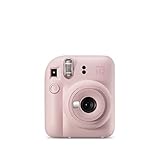
- Fun: Packed with features, making it a playful and joyful experience.
- Simplicity: Easy-to-use modes and controls make it accessible for beginners.
- Portability: Lightweight at just over 1 pound, perfect for on-the-go use.

- Features: One-touch video, red-eye removal, face detection.
- Portability: Ideal choice for on-the-go shooting.
- Usability: Compact, intuitive, and easy to use.
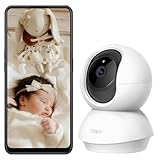
- Night-Vision: Provides a visual distance of up to 30 ft.
- Coverage: 360º horizontal and 114º vertical range.
- Clarity: Records every image in crystal-clear 1080p definition.
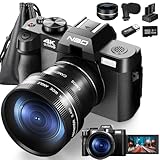
- Connectivity: Connects to PCs via USB and HDMI for easy sharing and streaming.
- Versatility: Comes with detachable wide-angle and macro lenses for diverse photography needs.
- Resolution: Stunning 4K video capabilities and high-resolution photography.

- Versatility: Perfect for both indoor and outdoor pictures.
- Quantity: Takes 27 high-quality photos per roll.
- Speed: Captures action clearly with Kodak 800-speed film.
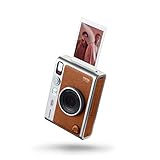
- Portability: Compact size fits in purse or wallet.
- Compatibility: Functions as both an instant camera and smartphone printer.
- Quality: High-resolution prints with instax mini film.
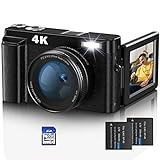
- Versatility: Functions as a webcam and HDMI-compatible for varied use.
- Autofocus: Auto-adjusts focus for sharp and clear photos effortlessly.
- Resolution: Captures 48MP photos and UHD 4K videos for high-quality imaging.
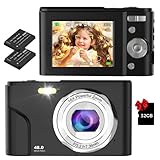
- Zoom: 16x digital zoom for detailed close-ups and distant shots.
- Autofocus: Enhanced focus, and includes webcam functionality for versatility.
- Resolution: 48MP ensures sharp photos; 1080P captures high-quality videos.

- Design: Compact, lightweight, and easy to handle.
- Viewfinder: Equipped with an optical viewfinder.
- Lens: Sharper f9 lens and powerful built-in flash.

- Light: Built-in fill light enhances photos in dark settings, adjustable as needed.
- Zoom: Features 8x digital zoom for capturing distant objects effortlessly.
- Resolution: Supports up to 48MP images and 4K video for high-quality recording.
Affiliate link: We are a participant of the Amazon Associates Program. If you buy a product through this link we might earn a small commission from Amazon at no extra charge for you. As an Amazon Associate we earn from qualifying purchases.
- Read the definitive camera buying guide
- View the camera picks and see how they rank in the top list
- More related cameras reviews
camera buying guide
Do you want to buy a good camera? This is all you need to know.
A short explanation: What are cameras?
A camera is a device used to capture images. While the designs of cameras found in devices such as smartphones and tablets are becoming increasingly advanced, the basic function of a camera remains the same, i.e. to use a lightproof box with a small hold to capture light. All cameras feature a body, a lens, and a sensor. The more high-quality the components of a camera are the better the image will be, although advancements in technology have improved the quality of entry-level cameras in recent years.
What are the benefits of good cameras?
Cameras are a timeless piece of technology that have been used for centuries, and while digital cameras are often used interchangeably with smartphones, there are many reasons to invest in a good camera , especially a dedicated digital camera. For example, digital cameras are designed specifically for photography, so tend to offer better lenses and other features that can provide higher quality images. Moreover, a digital camera can connect to a computer or printer, allowing you to easily upload and print off your images.
How to choose the best camera in 2025?
There are simply an inexhaustible amount of good camera models on the market, and thus a seemingly unlimited range of features options! Finding the best camera for your level of photography is easier if you break it down into bite-sized pieces. Consider the following before buying a new camera:
- Budget: Perhaps the biggest constraint we all have, you can spend anywhere from very little to a great deal on a camera. Entry-level digital cameras can be very affordable, but will lack the options and customisation a more advanced camera will offer. However, don't assume you need to spend several months' wages to get a fantastic piece of equipment – many of the best cameras on the markets aren't unreasonably prices.
- Size: Cameras range in size from small and pocket worthy to large and very bulky. Many incredible pieces of camera aren't bigger than a mobile phone, while pocket cameras may lack the advanced features of a bulkier option. Consider how and where you will need to use the camera, as someone taking professional photographs will have different requirements than someone using their camera on the move.
- Photography Level: Are you buying a camera to learn photography or do you already take plenty of photos? If the former is true you won't necessary need an overly advanced camera – many entry-level models allow the user to learn the basic functions while still offering a lot different settings to play with. However, those looking to buy a camera to simply take photos may be better with a camera that allows for an automatic point and shoot. The last thing you want is to be missing great shots as you try to work the manual! Many consider a DSLR to be the ultimate camera, although it may not be suitable for all. It’s also a rather large and bulky piece of equipment. Mirrorless cameras offer many of the benefits of a DSLR in a more compact size, making them a fine option for many. Of course, people may also opt for a more traditional compact camera, or bridge cameras, which sits somewhere between a compact and a DSLR in terms of performance and size.
Which types of cameras are available to buy in Australia?
There are many types of cameras available, any of which may be best for your needs in terms of resolution, features, and of course, budget.
- Compact Cameras: Small, lightweight, and very affordable, compact cameras (or digital point-and-shoot camera) are great for people new to digital photography, offering a notable high-resolution sensor for clear, vibrant, detailed images. However, there is no option to change the lens and they don’t tend to perform that well in low light.
- DSLR Cameras: Digital SLR cameras (DSLR) feature many lenses, a high optical zoom, and various depth settings. Pictures are highly versatile but the camera is still very easy to use, also allowing for quick, quality video capture. The prices are very affordable these days, although they were initially designed for more experienced users.
- Mirrorless Cameras: A newer model of the DSLR, these digital cameras are much smaller and lighter, yet feature many of the same capabilities. Rather than mirrors, these cameras project the light to the digital screen, making them much more compact.
